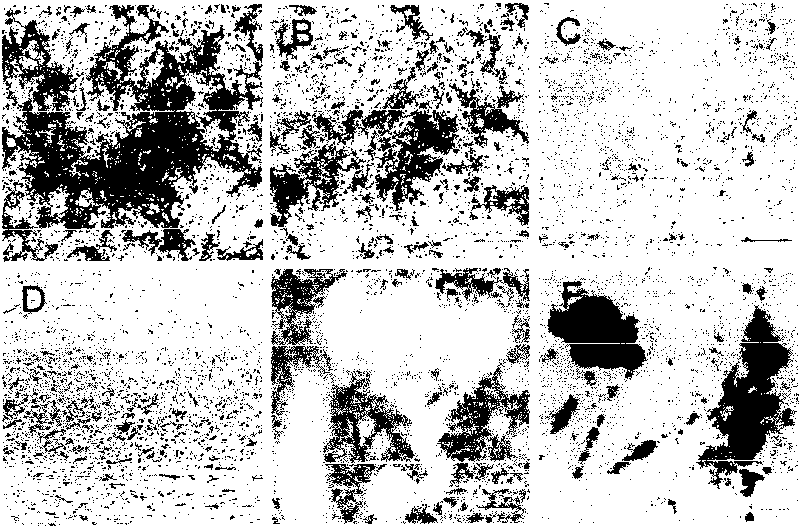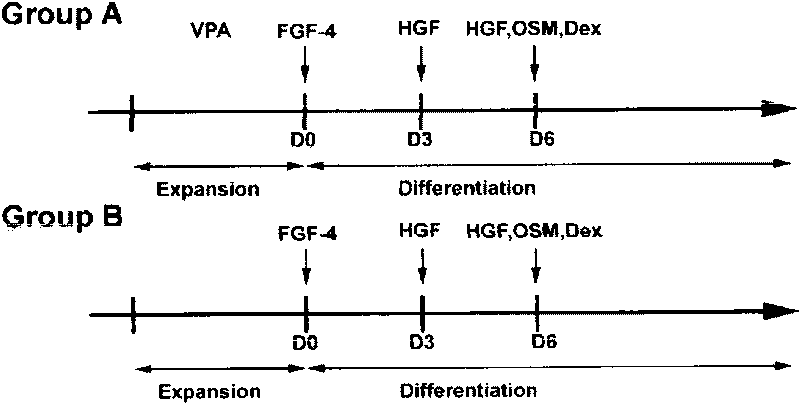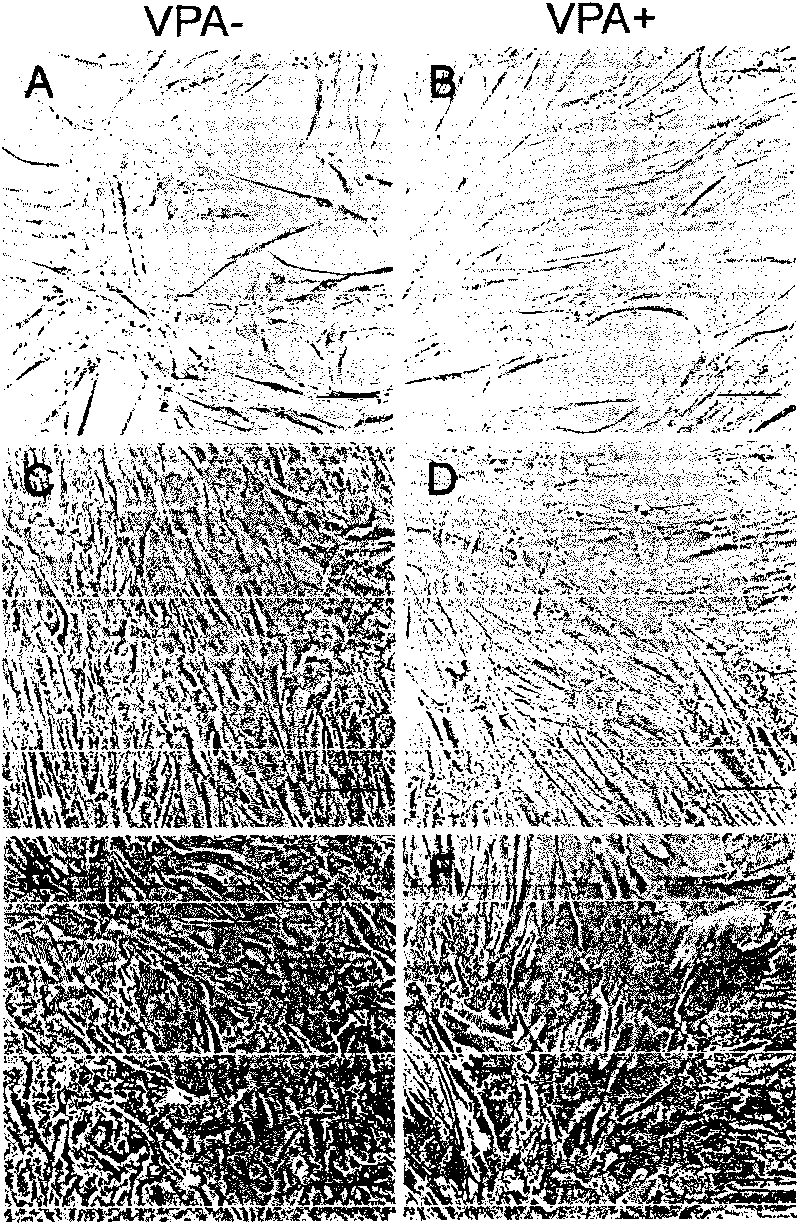Method for in-vitro liver cell differentiation of human marrow mesenchyme stem cells based on VPA inducement
A technology of bone marrow mesenchymal and hepatocytes, applied in the field of biomedicine, can solve the problems of rare research on differentiated hepatocytes, and achieve the effect of improving in vitro differentiation efficiency, increasing differentiation rate, and obvious induction effect
- Summary
- Abstract
- Description
- Claims
- Application Information
AI Technical Summary
Problems solved by technology
Method used
Image
Examples
Embodiment 1
[0040] Isolation and culture of human bone marrow mesenchymal stem cells
[0041] Firstly, mononuclear cells are isolated from human bone marrow samples, and the bone marrow from adult healthy volunteers is washed once or twice with phosphate buffered saline (PBS), and the bone marrow is diluted into a cell suspension, and gently added to human lymph The upper layer of the cell separation solution (Ficoll-Hypaque, D=1.077±0.002g / ml); after centrifugation at room temperature 2200rpm / min for 25 minutes, the upper layer of PBS was aspirated, and the middle white cell layer (mononuclear cell layer) was taken; the basal culture medium ( Contain 10% fetal bovine serum FBS, 100mg / ml streptomycin 100U / ml penicillin low-sugar IMDM) to wash the cells, then centrifuge at a low speed of 1000rpm / min for 6-7min, pour off the culture medium, and use this culture medium to dilute the cells to a certain concentration Inoculate the suspension in a culture bottle, place it in a 37°C, 5% CO2 incu...
PUM
 Login to View More
Login to View More Abstract
Description
Claims
Application Information
 Login to View More
Login to View More - R&D
- Intellectual Property
- Life Sciences
- Materials
- Tech Scout
- Unparalleled Data Quality
- Higher Quality Content
- 60% Fewer Hallucinations
Browse by: Latest US Patents, China's latest patents, Technical Efficacy Thesaurus, Application Domain, Technology Topic, Popular Technical Reports.
© 2025 PatSnap. All rights reserved.Legal|Privacy policy|Modern Slavery Act Transparency Statement|Sitemap|About US| Contact US: help@patsnap.com



